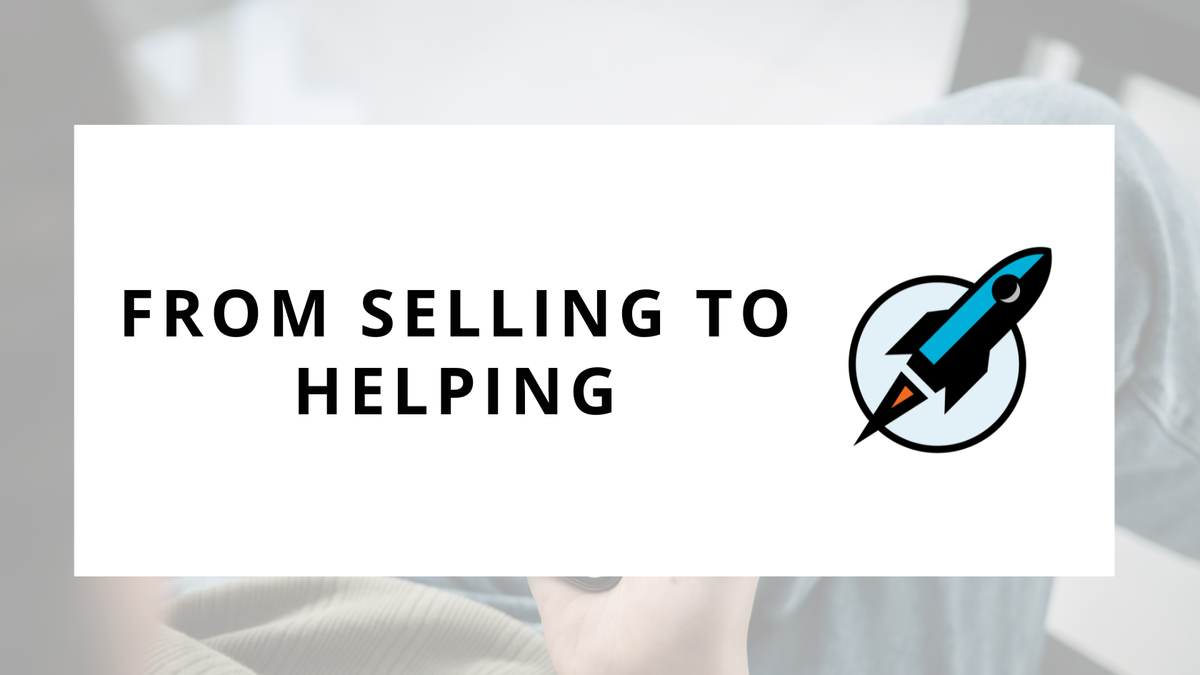From Selling to Helping: Adapting to the Buyer's Journey in the Digital Age

A significant shift has occurred from traditional selling tactics to a more nuanced approach of helping people buy.
This transformation is not merely a change in terminology but a fundamental shift in strategy, necessitated by the advent of digital channels and the consequent reduction in information asymmetry.
Today's consumers, armed with virtually limitless online resources, prefer to conduct their research and make informed decisions independently.
In this week’s Sell with Social, we’ll dive into the dynamics of this shift and offer actionable strategies for businesses to align themselves with the modern buyer's journey.
The Shift in Consumer Behavior
Digital channels have dramatically transformed the buying process, empowering consumers with information that was previously the domain of sales representatives.
This democratization of information has led to a decrease in traditional information asymmetry, where sellers once had the upper hand. Modern consumers are more informed, self-sufficient, and discerning than ever before, exhibiting a strong preference for conducting their own research before making purchase decisions.
This means that the traditional selling approach is increasingly less effective compared to a more modern, helping people buy approach.
Traditional "Selling" Approach
- Focus on Product: Centralizes the product features and benefits in conversations and marketing materials.
- Seller-Driven: Sales tactics are designed to control the narrative and steer the customer towards making a purchase.
- Information Asymmetry: Relies on the seller having more information than the buyer, creating a dependency.
- Transactional Relationships: Prioritizes the immediate sale over the long-term relationship with the customer.
- One-Size-Fits-All: Utilizes a standardized sales approach that treats all customers similarly.
Modern "Helping Them Buy" Approach
- Focus on Customer Needs: Prioritizes understanding and solving the customer's problem or need.
- Buyer-Driven: Empowers the buyer by providing them with the information and tools they need to make an informed decision.
- Information Symmetry: Aims to level the playing field by ensuring the customer has access to comprehensive information.
- Relationship-Oriented: Seeks to build trust and long-term relationships with customers beyond the initial sale.
- Personalized Experience: Offers tailored advice, content, and solutions that address the individual customer's situation.
The modern buyer is not just looking for a product or service but for a solution that adds value to their lives or businesses.
They value trust, authenticity, and a sense of partnership with their vendors. The psychological journey of buying has evolved; decisions are made based on comprehensive research, peer reviews, and a company’s digital presence. In this context, trust and authenticity have emerged as critical components of the buyer-seller relationship.
Strategies to Help People Buy
To navigate the modern buyer’s journey effectively, embracing strategies that prioritize understanding, educating, and genuinely assisting your audience is crucial.
Each of the following strategies is designed to foster a deeper connection with potential customers, guiding them toward making informed decisions with your help.
By focusing on their needs and becoming a source of valuable information, you become more than just a vendor; you become a trusted advisor.
Let’s explore how you can implement these strategies to transform the buying experience for your customers.
Creating Educational Content
Educational content serves as a foundation for building trust and establishing your brand as a thought leader in your industry. By creating content that addresses the questions, challenges, and interests of your target audience, you're not just attracting potential customers; you're also helping them make informed decisions. This can include blog posts, infographics, videos, and podcasts that cover a range of topics relevant to your audience's needs. The key is to focus on providing value and actionable insights rather than direct promotion of your products or services.
Presenting Through Live Events or Webinars
Live events and webinars offer a dynamic platform to engage directly with your audience, providing real-time education and interaction. These formats allow for a deeper dive into topics of interest, showcasing your expertise and providing attendees with valuable insights they can apply to their own situations. Furthermore, the interactive nature of live events and webinars enables immediate feedback and Q&A sessions, making your audience feel heard and supported.
Creating Downloadable Guides
Downloadable guides, such as eBooks, whitepapers, and checklists, are excellent tools for helping customers buy. They condense valuable information and insights into actionable takeaways that prospects can reference at their convenience. These resources not only serve as a means to educate but also as a way to guide potential customers through the decision-making process, offering them a tangible piece of your expertise that can influence their purchasing decisions.
Engaging With Your Community on Social Media
Social media provides a unique opportunity to engage with your community in a more informal, conversational way. By actively participating in discussions, answering questions, and sharing valuable content, you can foster a sense of belonging among your audience. This engagement not only helps in building relationships but also in understanding your audience's needs and preferences, which can inform your sales and marketing strategies.
Shift in Perspective to Be a Trusted Advisor, Not a Salesperson
Embracing the role of a trusted advisor rather than a traditional salesperson marks a significant shift in how you interact with potential customers. This approach is about prioritizing the needs, challenges, and goals of your audience above the immediate desire to make a sale. It involves offering unbiased advice, sharing expertise, and genuinely helping customers solve their problems. This paradigm shift fosters long-term relationships and builds a foundation of trust and loyalty that is invaluable in today’s competitive marketplace.

This week, I want you to think about your mindset. Are you selling? Or are you helping people buy?
BOTH mindset will lead you to generating revenue. However, helping people buy will position you more successfully to work with the modern buyer.
Here are two action items to tackle:
- Reflect on Your Buyer - Start by taking time to reflect on who your ideal buyer is. Who are they? What do they do? What problem are they facing? What questions do they ask you? Create a brief buyer persona that you can use for your strategy.
- Brainstorm Ways to Help - Then start to brainstorm all of the ways you can help this ideal customer buy. Consider each stage of their buying process, from the initial realization that they have a problem, all the way to post-purchase. Use this list to help you become a better “helper” through your sales strategy.
